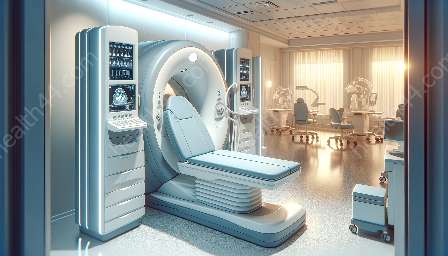Anesthesia machines are essential medical devices that contribute to the safe and effective administration of anesthesia to patients before undergoing surgery or other medical procedures. These sophisticated machines play a pivotal role in ensuring patient comfort, safety, and well-being during medical interventions.
The Evolution of Anesthesia Machines
From the early developments of anesthesia in the 19th century to the present-day state-of-the-art machines, anesthesia technology has undergone remarkable advancements. The evolution has been marked by a relentless pursuit of precision, safety, and efficiency in administering anesthesia.
Key Components of Anesthesia Machines
Anesthesia machines consist of several essential components, each serving a specific function to deliver anesthesia in a controlled and reliable manner. These components include the gas delivery system, vaporizers, breathing circuits, monitors, and scavenging systems. They work in tandem to regulate the delivery of anesthetic agents and maintain the patient's vital signs throughout the anesthesia process.
Gas Delivery System
The gas delivery system in anesthesia machines is designed to control the flow and composition of the gases administered to the patient, such as oxygen, nitrous oxide, and other anesthetic agents. The precise regulation of gas delivery ensures the maintenance of adequate oxygen levels and the proper administration of anesthetic agents.
Vaporizers
Vaporizers play a critical role in converting liquid anesthetic agents into vapor form for inhalation by the patient. Through precise calibration and temperature control, vaporizers ensure the accurate delivery of anesthetic agents, contributing to the safety and efficacy of anesthesia administration.
Breathing Circuits
The breathing circuits form the interface between the anesthesia machine and the patient, facilitating the delivery of gases and removing exhaled carbon dioxide. The design and function of breathing circuits are crucial for maintaining a clear airway and enabling effective ventilation during anesthesia.
Monitors
Modern anesthesia machines are equipped with advanced monitors that provide real-time data on the patient's vital signs, including oxygen saturation, heart rate, blood pressure, and respiratory parameters. These monitors enable anesthesiologists to closely monitor and respond to any changes in the patient's condition during anesthesia.
Scavenging Systems
Scavenging systems are responsible for safely removing excess anesthetic gases and preventing their accumulation in the operating room environment. Proper scavenging systems contribute to a safe working environment for healthcare providers and reduce the risk of exposure to anesthesia-related gases.
Integration with Diagnostic Equipment
Anesthesia machines are integral components of the broader spectrum of medical devices and equipment used in healthcare settings. Their seamless integration with diagnostic equipment enhances the overall patient care experience and diagnostic capabilities.
Diagnostic Equipment
Diagnostic equipment encompasses a wide range of medical devices used to assess, monitor, and diagnose various medical conditions. This includes imaging modalities such as X-ray, MRI, CT scans, and ultrasound, as well as laboratory instruments for blood tests, diagnostic imaging, and other diagnostic procedures.
Integration Benefits
Integrating anesthesia machines with diagnostic equipment enables healthcare providers to coordinate anesthesia administration with diagnostic procedures. For example, in imaging-guided interventions, close collaboration between anesthesiologists and radiologists ensures optimal patient positioning, comfort, and safety during diagnostic procedures while maintaining anesthesia delivery as needed.
Enhanced Patient Safety
The synergy between anesthesia machines and diagnostic equipment contributes to enhanced patient safety by allowing precise synchronization of anesthesia induction and maintenance with diagnostic procedures. This collaborative approach minimizes patient discomfort and optimizes the quality of medical imaging, ultimately leading to improved diagnostic accuracy and patient outcomes.
Advancements in Medical Devices & Equipment
Medical devices and equipment continue to undergo rapid advancements, driven by technological innovation and a focus on improving patient care and clinical outcomes. Anesthesia machines represent a cornerstone of these advancements, embodying the principles of precision, safety, and patient-centered care.
Evolving Technologies
The incorporation of cutting-edge technologies, such as artificial intelligence, data analytics, and remote monitoring, is revolutionizing the capabilities of anesthesia machines. These advanced features enhance the precision and automation of anesthesia delivery, improving patient outcomes and streamlining clinical workflows.
Patient-Centric Design
Modern anesthesia machines are designed with a patient-centric approach, emphasizing comfort, safety, and ease of use. Ergonomic designs, intuitive interfaces, and user-friendly features aim to ensure a positive and reassuring experience for patients undergoing anesthesia, aligning with the overarching goal of patient-centered care.
Interconnectivity and Compatibility
Interconnectivity and compatibility are integral aspects of modern medical devices and equipment, including anesthesia machines. Seamless integration with electronic health records (EHR) systems, interoperability with other medical devices, and data sharing capabilities enhance the overall efficiency and continuity of patient care within healthcare facilities.
Conclusion
As the healthcare landscape continues to evolve, anesthesia machines remain indispensable tools for ensuring the safe and effective delivery of anesthesia. Integrating with diagnostic equipment and aligning with the advancements in medical devices and equipment, anesthesia machines exemplify the convergence of precision, innovation, and patient-centered care in modern healthcare.


